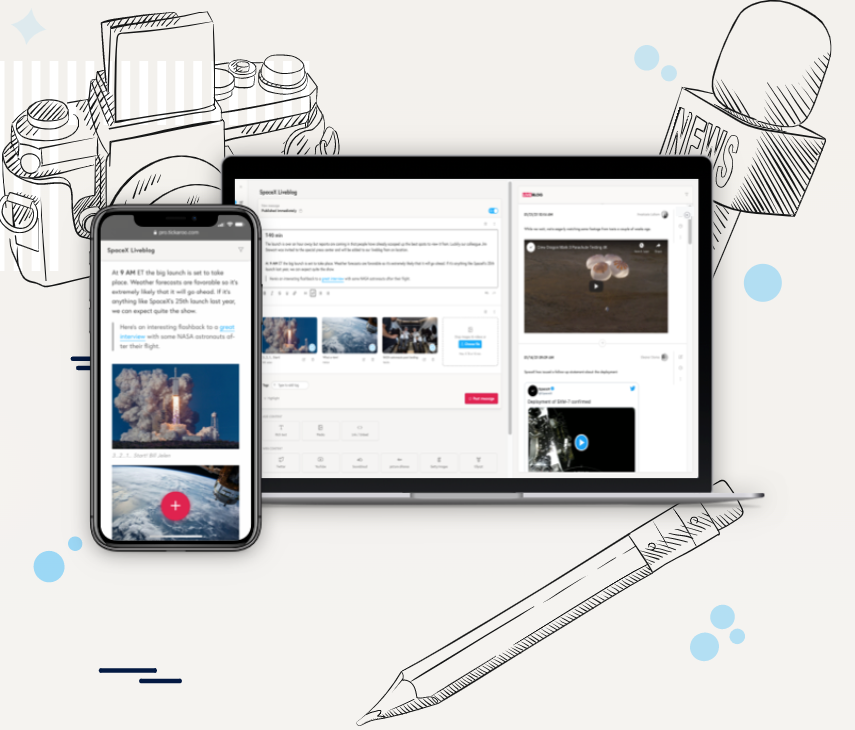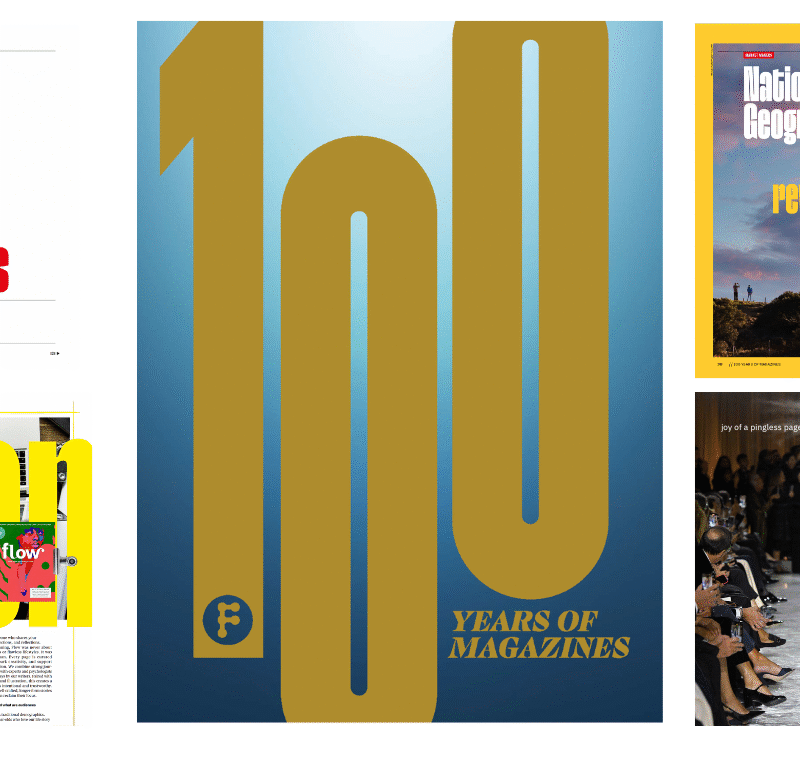Naomi Owusu, CEO and Co-Founder of Tickaroo on the future of live blogging
In an age where Brexit, Trump, Covid, and the conflict in Ukraine have all changed the news agenda, often on an hourly basis, live blogging has become an essential tool for media companies.
What once was largely the preserve of sports reporting has taken centre stage, delivering a platform for news journalists to keep readers abreast of the latest developments while operating as a hub to direct them towards older stories, analysis and features.
Maintaining a live blog can however be a very tricky process. Journalists not only have to make snap decisions as to whether news is real or fake, but also have to quickly source images, keep tabs on social media updates and sometimes offer instant analysis.
That’s why it is so important that live blogs are supported by robust, dynamic and ever-evolving technology platforms.
One company that has been providing live blogging platforms for several years now is Regensburg, Bavaria-based Tickaroo.
We caught up with the company’s CEO and Co-Founder, Naomi Owusu, who explains how the company has built up the business, how media companies are monetising live blogs and the role that AI and the metaverse will have in taking live blogging to new dimensions.
“Live blogs can help to give a time-saving overview of the current state, and the audience can always decide where they want to go for a deep dive, such as reading an article or watching an interview to get more information.”
Naomi, can you give me a resume of your career to date? How did you end up starting Tickaroo?
I worked for a software company called Kupferwerk, now Intive, for many years. My clients were from the sports and news industry. They were continuously dealing with the same issues. Mainly how to get stable data and produce good content to transition from print to digital. From that experience, I envisioned creating an app where everyone can easily create real-time news and get it online fast. At this point, mainly for sports. Because there was no interest in building a product at the agency, I went on to start Tickaroo to provide a solution that could help democratise live reporting.
What would you say is the key issue that Tickaroo is attempting to solve for publishers?
Real-time storytelling can be very challenging. To get news online, validate sources, deal with fake news, and find a voice that people can relate to is an art itself. Nowadays, journalists and editors have to handle the software, technical issues, unstable applications, usability issues, various incoming sources of information and even GDPR. Our objective is to provide an easy-to-use, stable tool for journalists. Even when a media company’s reach grows exponentially the journalist does not have to worry about technical or usability issues but can solely concentrate on the story, the readers, and the sources. That is our primary motivation.
Writing a live blog with Tickaroo should be about the live coverage, not the tool. We want to provide a seamless technical environment that supports the creating process of the journalist rather than being a disruption to the actual work.

And who is the company working with? Do you work with media companies in different ways?
We work with news and sports publishers, news agencies, photo agencies, various data providers, and TV stations. Any tool, service or content provider that a journalist needs to write a good news story is a potential partner. We are always looking out for new partners and clients. Some of our media clients use our tool to create live blogs. Some of them also distribute their live blogs via our marketplace.
A photo agency can sometimes provide photos that an editor might use for a live blog, so we have directly implemented those services to our interface,for example DPA Picture Alliance and Getty Images. The editor uses tags to search for photos on the Tickaroo live blog editor and can add a shot to the live blog story by clicking on it.
Press agencies provide live blogs as they happen on our marketplace, so if a publisher cannot cover a story, they can purchase it there from the agency and show it on their website.
Why do you think live blogging has become so popular with the news media? Did it always have the potential? Or is it that we are currently living through a series of momentous world events – Brexit, Covid, Ukraine etc?
We have been on the market for ten years now. At first, live blogging was very popular in sports. But with people getting used to news feeds on social media and consuming only small bits of information rather than reading a whole article. Demand for this content delivery format has also increased in the news publishing sector.
I think it has become a format that, in some cases – and depending on the news – keeps people more connected and engaged than a traditional article. It is also an additional tool for journalists to cover a story where minutes can make a significant difference. We live in a busy time, and live blogs reflect that dynamic well. Information floods people from morning till night. One historic event follows the next. Live blogs can help to give a time-saving overview of the current state, and the audience can always decide where they want to go for a deep dive, such as reading an article or watching an interview to get more information
“In an age where Brexit, Trump, Covid, and the conflict in Ukraine have all changed the news agenda, often on an hourly basis, live blogging has become an essential tool for media companies.”
And how are more traditional magazine style publishers using your platform? Any good examples?
Some of our clients include motorsports magazines. They use the blog for reporting Formula 1 events, mostly the races. Tech Magazines use the live blog for keynote sessions and for announcements such as Apple product events. Scientific magazines have, for example, live blogged from the World Climate Conference in Glasgow. Also, we have one digital magazine that gives daily updates on cryptocurrencies in its live blog. We have currently released a great update where you can create a wonderful travel live blog.
What impact did the pandemic have on your business?
During the pandemic, our sports clients were struggling a lot. We tried to give support, not directly related to our live blogging tool but more in a broader sense. Together with a football club in Germany, we released a CSR platform where fans can support the community. For example, getting groceries for the elderly or cleaning up the local park. Also, we helped a sports federation build an online academy. However, there was a high demand for news during the pandemic. It was tough to get information in our communities about regulations and opening hours, so we released a particular type of live blog that communities could use to keep people up to date and officially connect with them.
When we were all working from home, we had the opportunity to optimise processes and improve our methods of communication. We tried to keep everyone safe and use the pandemic as an opportunity to be creative.

For companies who do want to experiment with your platform, how can they monetise what they are doing?
There are various ways of monetising a live blog. The most obvious way is to have ads on the live blog, which works well due to the high amount of traffic and engagement. We are also working with clients to create sponsored live blogs similar to sponsored articles, for example, travel blogs. Users can always link to other content on their site for more detailed information such as polls, reports, or analysis to increase their traffic. Our clients can also distribute their blogs on our marketplace to other publishers, TV stations, and others. If they have complete information or are exclusive to an event that might interest others.
What might we see in the future? How might live blogging be impacted by technologies like AI, the metaverse etc?
AI is pretty standard in the sports news sector. Some partners use robotic-generated game reports that work with online information such as game results, weather and scoring to create texts for a live blog’s pre or post-game phase.
AI can help provide content from verified providers for live blogs automatically. So instead of searching for content, the journalist might get suggestions and be provided with text suggestions created from titles and published descriptions. The quality of automated content will improve in the next couple of years. However, I still think that it is essential that the editor decides what to use, what to edit, or what to create. This is especially true with news given that there is so much content out there that might come from dubious sources. Automated fact-checking is a process that will help us increase the quality of the live- blog content in the future.
In terms of the metaverse, I think it is an excellent opportunity for live blogs to give people a deep dive into topics making news consumption a better experience, particularly in terms of events, conferences, or travel blogs.
Suppose people spend time in the metaverse – they will also want to get updates on the news. We will need to provide an interface where audiences can experience mixed realities or metaverse live news. We need to deconstruct and reconstruct user experience and user stories.
Where next for Tickaroo? What are your priorities for 2022?
We are continuously working on integrating new content partners. We also put significant emphasis on creating new audience engagement features. In addition, we are working on improving our sports live blog editor. Furthermore, we continue to enhance our statistics to give our clients more insight into how their content is performing. Earlier this year, we launched a significant improvement on the look and feel of the live blogs to support the appearance of the different types of blogs










